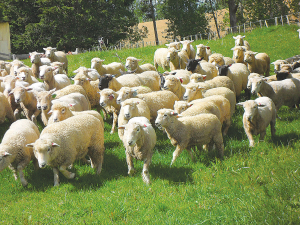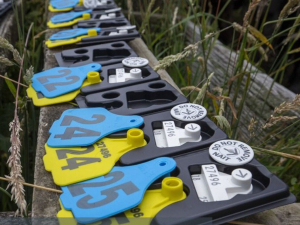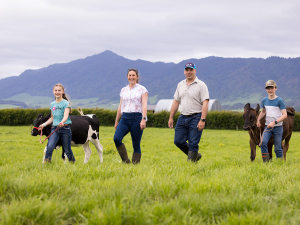Farmers were confident that drench companies would continue to find new compounds to protect their animals.
Recently I found an old article that had been saved, dated 5 February 2005. It featured an investigation into worm resistance by Massey scientist Bill Pomroy, who was working with goats that were “riddled with worms”.
That was 15 years ago!
In the same publication on the same date, in an article entitled “Lincoln tackles drench resistance”, Dr Jon Hickford stated that he believed that drench resistance was costing the sheep industry $300m a year.
Again, that was 15 years ago!
Now we have the same problem with sheep where some farms now have total resistance to all chemical drenches and combinations.
At present, lamb finishing farms are the most affected. This is understandable as they purchase thousands of store lambs from many properties from November through to July. Some of these lambs will have total worm resistance and it only takes a small number to contaminate a property. In these instances, quarantine drenching will only increase the problem by removing the less drenchresistant parasites.
At this stage, I believe many – if not most – sheep farmers will have a degree of worm resistance on their properties. These farmers will be unaware of the looming problems that lie ahead. Fifteen years ago, Bill Pomroy predicted our present situation when he said: “A time bomb is ticking under the sheep industry as drench resistant parasites become more common while drug companies and research funding lag in their response”.
The problem for farmers is that a degree of resistant worms in their lambs is not visually apparent. Even the best stockmen will see no change. This is because even if drenching only kills 30% of worms (or even 50%) the lambs will still look fine. By reducing the number of worms by drenching, it enables the immune system to control, or kill the smaller number of surviving worms.
About 30 years ago, during my first of four visits to the CSIRO AgResearch Centre at Armadale, northern New South Wales, my first question was: “Is it possible that worms will develop immunity to the immune system?” The scientist’s reply was, trials had found that worms will never develop resistance to the immune system.
As worm resistance increases quite suddenly, drench resistance will become more physically apparent with weight loss. This is especially the case where the Barbers Pole worm is dominant; some deaths may even occur. Remember this worm does not cause dags and sheep will suddenly die due to blood loss, completely dag free.
It is vital for farmers to know the drench resistant status of their flocks. This will ensure they are mentally prepared when – not if – worms achieve total resistance to all drenches.
Trevor Cook, our national veterinarian, visited me some weeks ago. I have known Trevor since his first engagement with our local Vet Club where I was chairman. Over the years we have stayed connected and latterly he performed embryo transfer operations on my Romney stud.
During our conversation, he stressed the importance of farmers knowing if they had drench resistance and – if so – to what extent. He says that he was surprised and disappointed that otherwise good farmers had not tested their flocks for drench resistance.
This test is simple and inexpensive. It is a matter of doing a faecal egg count around 10 days after drenching to see what percentage of worms survived. Work with your vet for this rest. They will study the results, assess if your flock has drench resistance and what percentage of worms survived the chemicals.
I believe that when our flocks have a degree of drench resistance, total resistance will soon follow as several generations of worms occur each year.
We need to prepare ourselves mentally to ensure that we are prepared to take the options that are necessary to best handle worm challenges. This is possible.
There are now two options available to manage total drench resistance. Trevor Cook has already designed management practices that reduce worm numbers to a point where farming sheep can continue.
The second option is choosing the genetic path. Already in our country, we have sheep that have a strong immune system sufficient to withstand any worm challenge. However, their numbers are not great.
There are about 30 ram breeders breeding for the resistant trait. They will have rams available that will pass on some resistance, which will help in areas of moderate or low worm challenge. However, in areas of high challenge, particularly where the Barbers Pole worm is the dominant species, it will take more time to achieve “meaningful worm resistance”.
The use of AI – artificial insemination – from top rams will speed up the process.
When FECs Go Wrong!
On some relatively rare occasions, faecal egg counts (FEC) will not indicate the true level of worms.
In fact, the FEC could well be totally wrong in its numbers. Such a situation arose about 25 years ago on a Beef + Lamb monitor farm in the Kaiwaka area in lower Northland.
Farmers had gathered for a field day about the peak of the worm challenge period. These farmers, with considerable experience, concluded that the lambs they were viewing were full of worms and needed drenching. However, a recent FEC registered low counts. However, the farmers were right and the FEC did not reveal the true situation.
How could this situation occur?
The FEC cannot indicate the number of immature worms an animal is supporting. Like children up to their early teens, immature worms grow quickly living on their host and in the case of Haemonchus, consuming blood.
The numbers of these developing worms can vary greatly depending on environmental conditions. These conditions usually occur after a drought when millions of worm eggs remain unhatched.
At the same time, the worms in animals will decrease as they grow old and die and are not replaced. With rain and warm temperatures, many of these worm eggs will hatch and continue to develop to stage three. At this stage, they are in the pasture and will be ingested by animals where they will continue to develop and feed off the host until they mature and mate.
At this stage, females will shed large numbers of eggs – in the case of a single Barbers Pole worm, up to 10,000 per day!
Farmers need to be aware of this unusual situation, especially after a dry spell.
Gordon Levet is a long time Northland ram breeder.



















